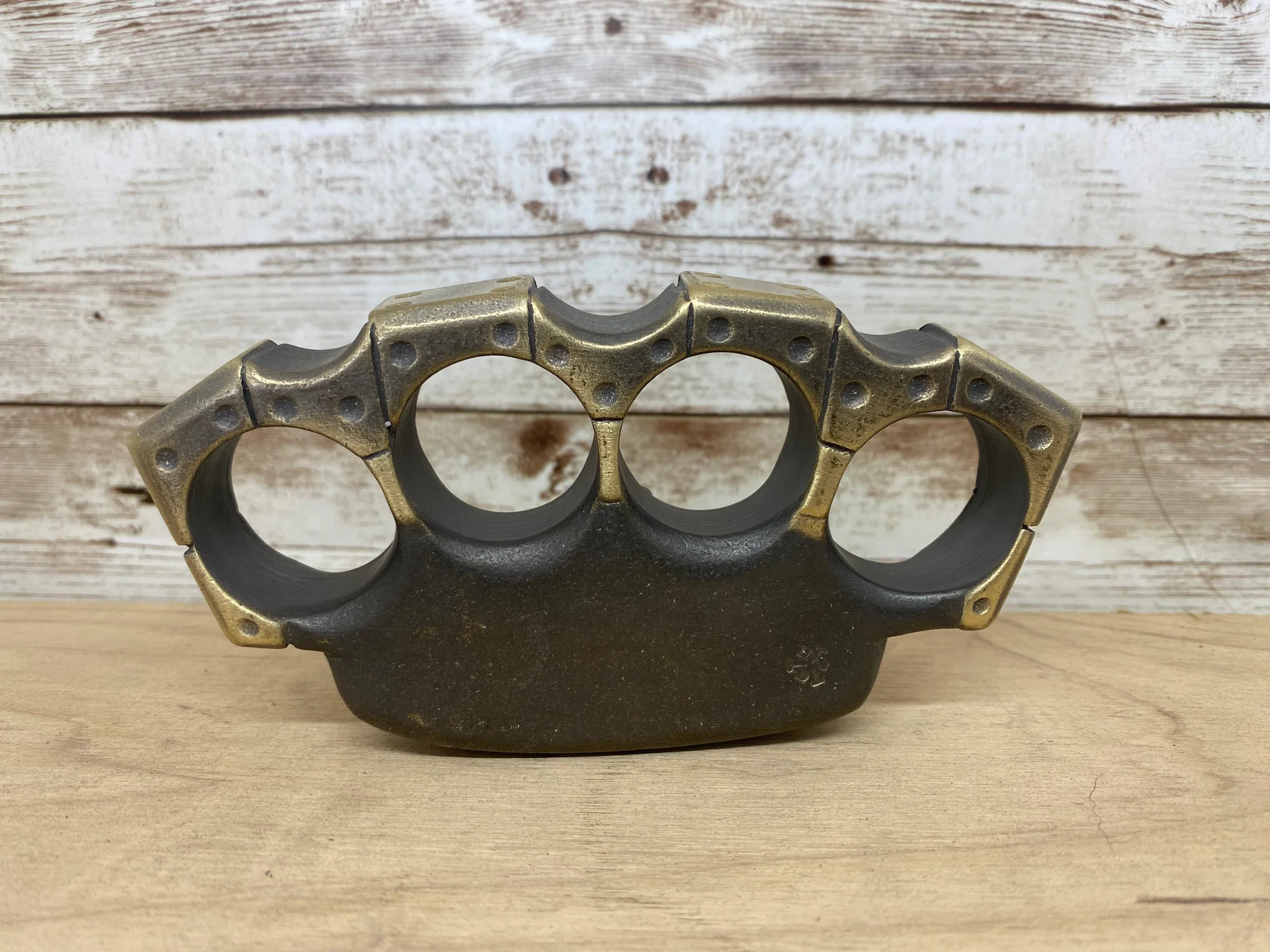Knuckle dusters, also known as brass knuckles or knucklebusters, are handheld weapons designed to enhance the striking power of a person’s punches. Throughout history, these implements have been used for various purposes, ranging from self-defense to offensive combat. The origins of knuckle dusters can be traced back to ancient civilizations. In ancient Rome, a similar weapon called the “cestus” was used in gladiatorial combat. It consisted of leather straps adorned with metal plates that covered the knuckles, making punches more deadly and devastating. It was based on a Greek original, which employed straps called himantes and sphirae, hard leather strips that enclosed and protected the fist and lower arm.
In India, there was a metal ring and knuckle styled weapon called the vajramushti. The vajramushti was usually made of ivory or buffalo horn. Its appearance is that of a knuckleduster, slightly pointed at the sides, with small spikes at the knuckles. The variety used for warfare had long blades protruding from each end, and an elaborate bladed knuckle. It’s use was recorded as far back as the 12th century.
Knuckle dusters gained popularity during the 19th century. They were initially used as self-defense weapons by civilians and soldiers alike. During this period, knuckle dusters were often crafted from brass, iron, or other metals, with finger holes that allowed the weapon to be securely held. Knuckle dusters became associated with street brawls and gang violence in the late 19th and early 20th centuries. Criminals and gang members often used these weapons to deliver powerful and harmful blows to their opponents. As a result, the possession and use of knuckle dusters were regulated or outright banned in many places.
In the 1898 edition of Cobham Brewer’s Dictionary of Phrase and Fable, knuckledusters were defined as:
a metal instrument which is fitted to a man’s fist, and may be readily used in self-defence by striking a blow. Sometimes these instruments are armed with spikes. It was an American invention, and was used in England in defence against the infamous attacks of Spring-heel Jack. We have the phrase “To dust your jacket for you,” meaning to “beat you,” as men dust carpets by beating them.[7]
During the American Civil War (1861–1865). soldiers would often buy cast iron or brass knuckles. They would carve their own from wood, or cast them. They were used by criminals in France in the late 1900’s and early 20th centuries. During World War I and World War II, knuckle dusters saw limited use by some soldiers and commandos. They were sometimes issued to troops for hand-to-hand combat, where close-quarters combat required a compact and efficient striking weapon.
The US Army issued two different knuckle knives, the US model 1917 and US model 1918 Mark I trench knives. Knuckles and knuckle knives were popular with both American and British soldiers.

Due to their association with violence and criminal activity, many countries began implementing strict legal restrictions on knuckle dusters. These regulations sought to reduce the potential for misuse and criminal activity involving these weapons. In contemporary times, knuckle dusters have found a place as collectors’ items or fashion accessories. Some are designed purely for decorative purposes and are not intended for use as weapons. In this context, they serve as historical curiosities or symbols of defiance, rather than functional weapons. Today, the legality of owning, carrying, or selling knuckle dusters varies widely by country and region. Many jurisdictions consider them dangerous weapons and impose strict regulations, while others allow them for self-defense purposes under certain conditions.


